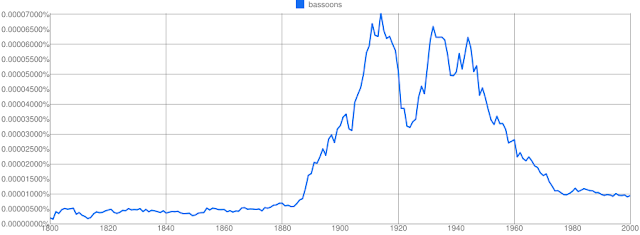Take me out to the ball game
Take me out with the crowd
Buy me some hazelnuts and dark chocolate….
I keep a bowl of chocolate on the conference table in my office where I often meet with students. As dean, when I have students in my office, they are NOT generally there to tell me how happy they are. They usually come with a concern or complaint- some bone to pick with a professor, with me, or with the university. They are often stressed, upset or unhappy, and they are almost always nervous. Most of the time, the problem is not as severe as they think it is, and we can generally find an acceptable solution. Often, along the way, they take a piece of chocolate from my bowl and I can see them relax just a little bit.
It is common knowledge that chocolate reduces blood pressure and increases levels of both endorphins and serotonin, boosting mental health. While medical science has spent decades studying the effects of chocolate in reducing the effects of stress, I spent 10 minutes and found pretty convincing proof that chocolate is used by humans worldwide to self-medicate during stressful times.
10 minutes.
That may be a slight exaggeration. It was probably closer to 25 minutes if you count the ‘short course’ I took in methodology.
Yup, tonight alone, I searched for the word "chocolate" in 5 million books printed between 1800 and 2000 in English, French, German and Russian. It turns out that people around the world (or at least in the US and Europe) write a lot about chocolate during historically challenging times.
This is a graph of the percentage of English language books published over the last 200 years that make mention of the word chocolate. Interest in chocolate clearly peaked during World War I and World War II. It is interesting to note that it appears to be on the rise again, or at least it was as we approached Y2K.
And it is not just in English speaking countries. In France, the occurrences of the world "chocolat" peaked during times of major conflict—the Napoleonic Wars, World War I and World War II. This seems to confirm the link between societal anxiety and chocolate.
Among the Germans, we see general anxiety from about 1900 on, again peaking during World War II. Like us, German speakers appeared to be growing increasingly anxious as we neared the new millennium.
The Russians seem to be generally less interested in chocolate overall than western Europeans or Americans, but even there, mentions of шоколад peaked during World War II.
It turns out that interest in baseball pretty much tracks chocolate—with maximum interest during the same time periods even if no one sings about chocolate at the “old ball game.”

How did I scan 5 million books for references to chocolate, chocolat, schokolade, шоколад, and baseball in just 10 minutes?
I can give you the answer in one url: ngrams.googlelabs.com.
This site is an offshoot of a very interesting research project. In a nutshell, Erez Lieberman Aiden and Jean-Baptiste Michel developed a way to scan the 5 million books (an estimated 500 billion words) digitized by Google for words or phrases and then report the number of occurrences. In effect, this allows us to probe what was culturally important as a function of time over the last couple of hundred years. This would be awesome all by itself, but even more amazingly, Googlelabs has made the technology available to anyone who wants to play. The raw data can even be downloaded for more sophisticated analysis. It is very slick and very, very fast.
(If you want to learn more about this, you can view a fascinating video called “What we learned from 5 million books” at (http://www.ted.com/talks/what_we_learned_from_5_million_books.html?utm_source=feedburner&utm_medium=feed&utm_campaign=Feed%3A+TEDTalks_video+%28TEDTalks+%28video%29%29)
(If you want to learn more about this, you can view a fascinating video called “What we learned from 5 million books” at (http://www.ted.com/talks/what_we_learned_from_5_million_books.html?utm_source=feedburner&utm_medium=feed&utm_campaign=Feed%3A+TEDTalks_video+%28TEDTalks+%28video%29%29)
Suddenly cultural trends are revealed with a search term and a mouse click. For no particular reason, I explored cultural impact of various types of nuts; it turns out that almonds are generally decreasing in popularity but hazelnuts are coming into favor. So is Pinot Noir. (These may be good trends for the state of Oregon which specializes in both hazelnuts and pinot noirs!) Other wines? Well, Chardonnay and Cabernet Sauvignon were virtually unmentioned until about 1980, but their popularity increased quickly. Myself, I am a red wine drinker, but apparently writers think more in terms of oaky whites.
There is no doubt. I am addicted to this site. I think this must be better than cocaine (certainly less dangerous) and maybe even as good as chocolate.
Here is a mystery. What on earth accounts for the bimodal popularity of bassoons? Is it somehow related to stress and anxiety during wartime too? Do bassoons and chocolate have similar affects on mental health?
I started playing the bassoon in 1969, so I can hardly be blamed for the decline in the cultural significance of the instrument after WWII. Nonetheless, I clearly did nothing to reverse the slide into cultural obscurity of my favorite instrument!
It has been a long time since I posted on this blog. I have missed it and while I am not promising to write daily or even weekly, I am planning to post more often than I have recently. As in the past, I want to end with a simple statement of gratitude. Today, I am grateful for a lovely warm late summer afternoon in Ann Arbor with my two favorite kids and our new puppy.






I checked over and over and over yesterday WAITING for a post ... FINALLY! This was awesome. And more evidence of why we're friends. Loved the transition (?) from chocolate to bassoons. Brilliant!
ReplyDelete